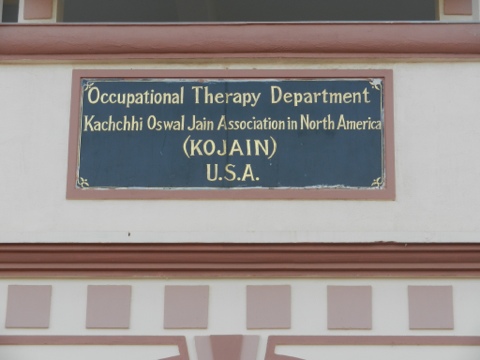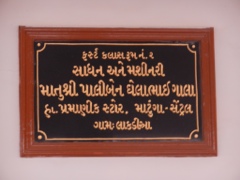
A question one is often asked in India, when meetings strangers is ” Where is your native place ?” The intent is to understand which part of the country you have your roots in, and ideally which village. The response invariably leads to a friendly and animated conversation, with an exchange of information on food, customs, dress and friends or neighbours who hail from that region or village.
It is a wonderful ice breaker – if indeed one has a ” native place”. Being the child of a family that migrated from across the border during partition, I always felt a bit at a disadvantage, as “our native place” is now foreign to our generation. So I learnt, quite early on, to focus on the other person’s native place and as a result have had the most delightful conversations !
What has always amazed me, is the attachment most Indians have to the village or region of their roots, even though they may have been born in, or lived most of their life, in another part of the country or abroad.
During the past week in Kutch, this was reinforced. I had the opportunity to spend some time with the Kutchhi Jain community and was struck both by their close attachment to their native place, and their tremendous philanthropy.
No matter where they live, most of them try and return home at least once a year for a major religious festival or a family function. They identify themselves by the village of their origin, and after a while, will share modestly, how they have contributed back to their village, or the wider area.
Across the district of Kutch, in temples, rest houses, animal shelters, parks, schools and hospitals, one finds plaques (usually carved on marble or granite) mentioning the name of the donor, her/ his village and what has been contributed.
What is remarkable, is the profusion of donors, the grace with which the donation is acknowledged, and the visible outcome of how the money has been spent. Therefore, for example, if money was contributed for the construction of one room, there will be a plaque outside that very room, mentioning the name of the donor, her/ his family and village. If the donor could afford only a smaller amount, and for example contributed funds only for the furniture or equipment in the room, this is also mentioned in a similar plaque. I have seen several plaques acknowledging donations as small as Rs 1000 – 5000, and noted with surprise how far that rupee seems to have stretched.
Often the same family that has made the Capital contribution, will also make recurring annual contributions to support ongoing maintenance. The need to manage the corpus and contributions, has resulted in a wealth of Community based trusts, dedicated to charitable work. Just as financial contributions are from the community, the fiduciary management of the trusts is undertaken by individuals from the community, each contributing their skills to ensure good Governance.
How this worked was shared with me by Vasant & Veena Dedhia, a wonderful couple whom I met on the train from Mumbai to Gandhidham. Our conversation, began with the Native Place introductions ! As it happened, we soon realised that we were headed for the same destination, and so I got to know them well, and through them gained an understanding of many aspects of the Kutchhi Jain way of life.
The Dedhia family had focused their philanthropic contributions on health care. We visited the Bidada Sarvodaya charitable hospital ( the subject of another blog) where the family had originally contributed the cost of two rooms. Every year since then, they make an annual donation to the trust, to support its maintenance, and hence the ability of the hospital to provide high quality but subsidised treatment. The plaque, outside, Vasant Dedhia explained, would remind his children and grand children, that they should continue the family tradition.
In addition, in his own village of Nani Jhajar, he had realised that there was no doctor, a problem common to many villages in our country. So the community got together and raised funds to construct a clinic, pay a regular (and attractive) salary to a doctor from the city, and provide him with housing. In return the Doctor was to provide subsidised health care to the villagers. A small trust has been established, with trustees as village elders, who also monitor the quality of work of the Doctor. Finances are raised in Mumbai, and the maintenance of accounts also carried out from there, is shared with all those who have contributed.
I found this to be a very interesting and powerful form of Philanthropy.
Charity that begins at home can prove to be extremely sustainable. A virtuous cycle is created when
Outcomes are tangible and rooted in community needs, Governance is local can be trusted, and the contribution of individuals no matter how modest, is publicly acknowledged and valued – hence encouraging them and others to contribute more.
This also provides an interesting insight, into how perhaps a country like ours, should address what we often feel are insurmountable problems. Broken down into small units of one village at a time, issues like education, health care, access to clean drinking water etc can be tackled by local communities and citizens – with their own funds. The community takes ownership, ensuring that money is wisely spent. There is little need for Government intervention, and no scope for corruption.
A different model of Philanthropy from that propagated by Warren Buffet, but a very effective one nevertheless !


http://meerasanyal.wordpress.com/2012/03/18/charity-begins-at-home/
No comments:
Post a Comment